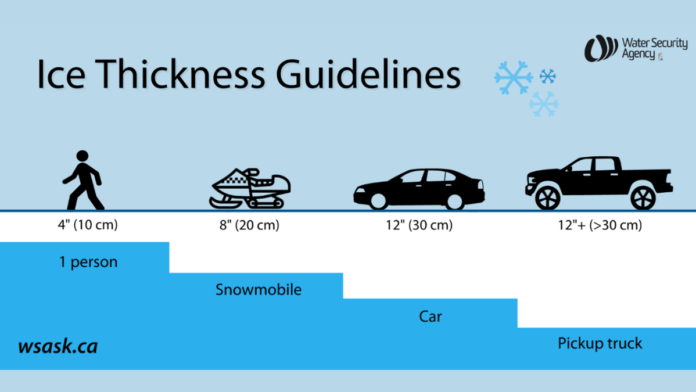With temperatures cooling and snow arriving, the Water Security Agency (WSA) is reminding the public to ensure that ice is thick enough to safely walk, drive, or snowmobile on.
Ice thickness can be unpredictable and difficult to assess at times. It does not freeze at a uniform thickness and its strength can vary considerably from one area to another.
To be sure, check the ice thickness before you travel on it. As a guideline, you need at least 10 cm (four inches) of ice to walk on, 20 cm (eight inches) to drive a snowmobile or ATV on, 30 cm (12 inches) to drive a car or light truck on, and more than 30 cm (12 inches) to support a heavy truck.
Guidelines are provided to help individuals decide whether to venture onto the ice. Thickness is just one consideration when evaluating ice safety. Clear, hard ice is the only ice recommended for travel.
You should always check the ice conditions where you are before venturing onto the ice.
Ice should be re-evaluated on every date visited, even if it was safe on a previous date. The date that ice becomes safe at a site varies year-over-year requiring the verification of the thickness each year as opposed to relying on past experiences.
Also, avoid ice that:
- looks slushy;
- has thawed, then froze again;
- is near moving water;
- is layered, caused by sudden temperature changes; or
- has structures on it, such as pressure ridges.




